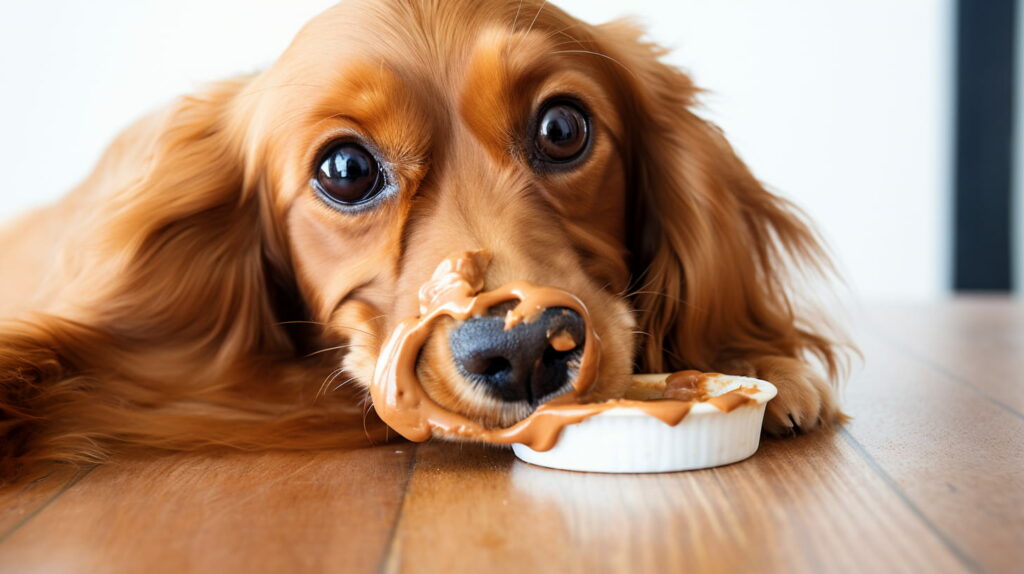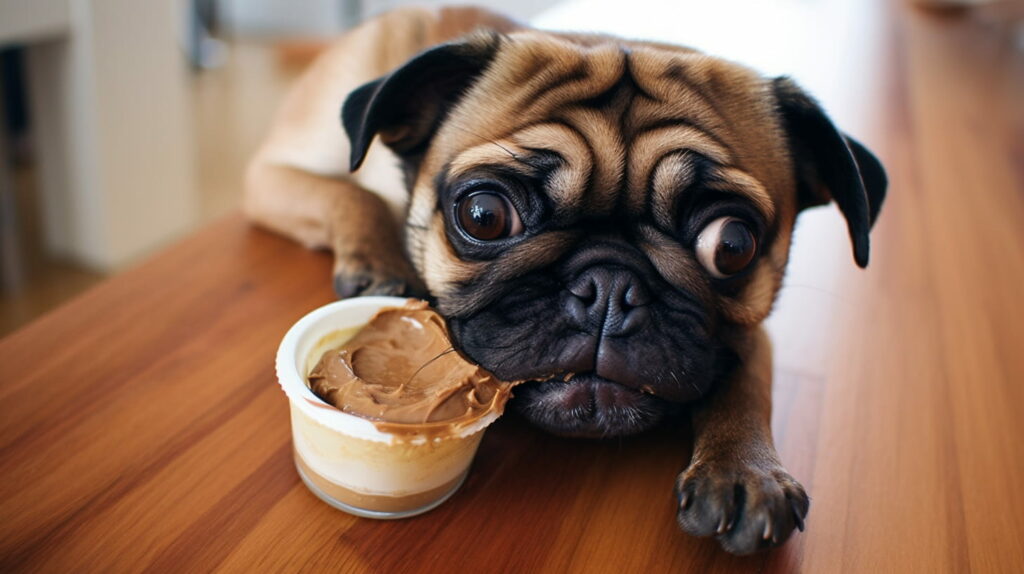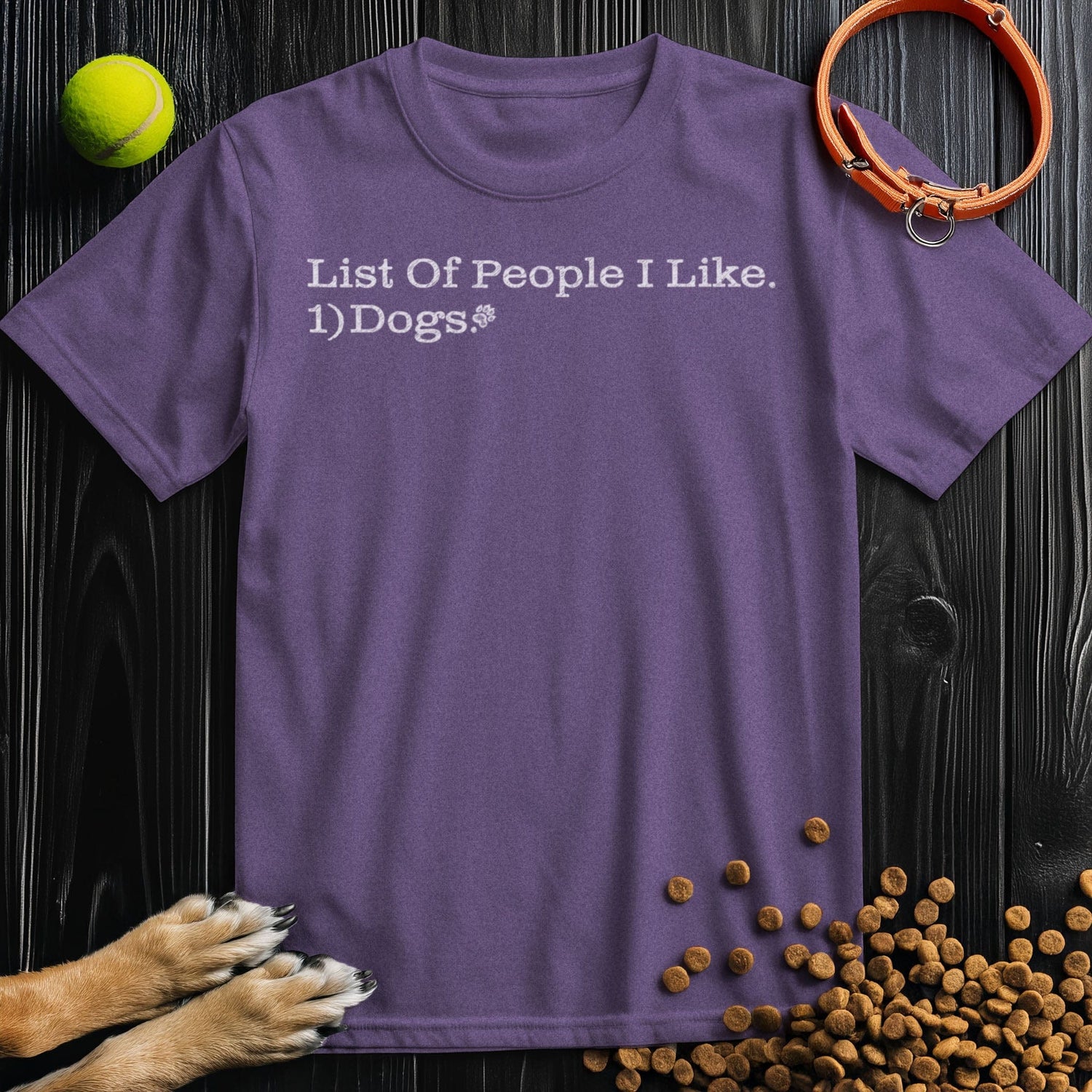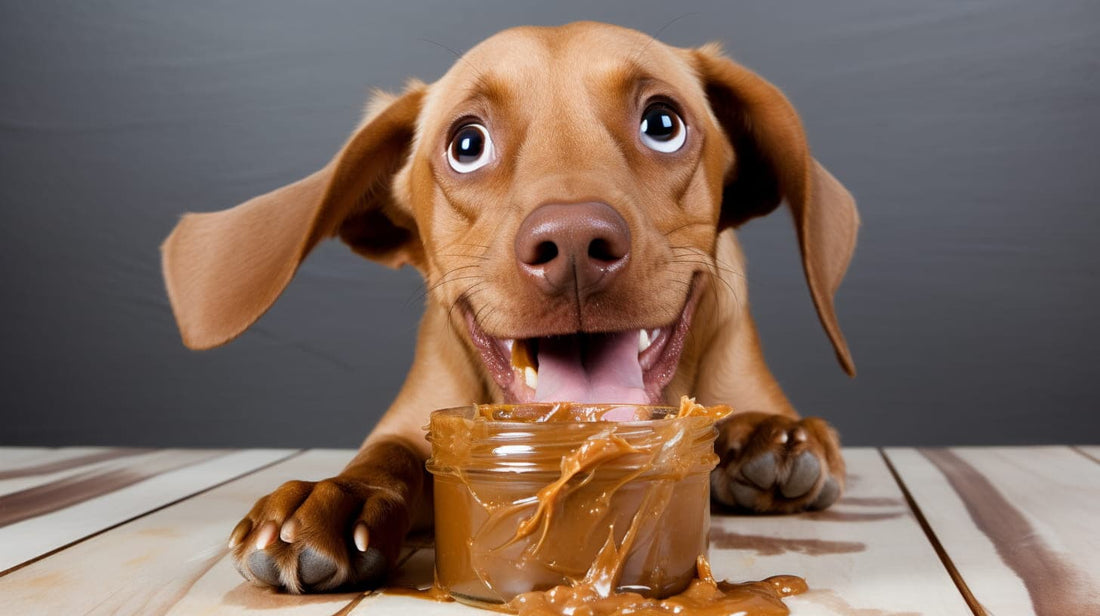Have you ever wondered if your dog's favorite treat could be silently putting their health at risk?
Peanut butter is a beloved snack for many dogs and their owners. But is peanut butter safe for dogs to eat? It's important to know what ingredients to look out for. Also, knowing how much peanut butter is too much is key.
A common concern is xylitol, a sugar substitute that is toxic to dogs. So, it's important to choose dog-safe peanut butter options.
Introducing peanut butter to your dog's diet doesn't have to be complicated. Start with small amounts to watch for any allergic reactions. Remember, due to its high calorie content, overfeeding peanut butter can lead to obesity. Let's explore the benefits, risks, and best practices for feeding peanut butter to our furry friends.

Key Takeaways
- Always check peanut butter labels to ensure they are free from xylitol, a toxic ingredient for dogs.
- Peanut butter can be a good source of protein but should be given in moderation.
- Introduce peanut butter slowly to monitor for any allergic reactions.
- Due to its high-calorie content, peanut butter should not exceed 10% of a dog's daily caloric intake.
- Choosing the right peanut butter and understanding portion control is key to ensuring your pet’s health.
Can Dogs Eat Peanut Butter?
Dogs can eat peanut butter, but pick the right kind and don't overdo it. Peanut butter is good for them, but you must be careful. This is because the wrong kind can be bad.
Benefits of Peanut Butter for Dogs
Peanut butter is full of protein and healthy fats. These help dogs grow strong and have lots of energy. It also has vitamins E and B, which boost their immune system and make their fur and skin better.
But start with a little bit to avoid allergies. Peanut butter in toys can distract dogs during scary times like nail cuts or baths. It's high in calories, so don't give too much to keep them from getting too fat.
Choosing the Right Peanut Butter
It's very important to choose safe peanut butter for pets. Make sure it doesn't have xylitol, a sweetener that's very bad for dogs. If dogs eat xylitol, they can get very sick or even die.
Also, pick peanut butter without added sugars or salts. Natural or raw peanut butter is best because it's less likely to have bad stuff in it. Watch your dog for any signs of allergy, as peanuts can be a problem for some dogs.
The American Kennel Club says to only give dogs peanuts in small amounts. Use dry-roasted or raw, unsalted peanuts to avoid weight gain and stomach problems. Peanut butter is good for dogs, but only if you choose the right kind and don't give too much.
Health Risks of Feeding Peanut Butter to Dogs
Many dogs love peanut butter, but it's important to know the dangers. The main risks are toxic ingredients like xylitol and high fat. These can cause health problems if dogs eat too much.

Xylitol: A Hidden Danger
Xylitol is a sweetener in some peanut butters. It's very bad for dogs, even a little bit. It can cause low blood sugar, seizures, and liver failure. Always choose xylitol-free peanut butter and check labels.
Portion Control and Health Issues
It's also key to watch how much you give. Too much peanut butter can make dogs fat. This can lead to pancreatitis and other problems. Treats, like peanut butter, should be just 10% of a dog's diet.
- Always check the ingredient list for xylitol.
- Choose all-natural, xylitol-free peanut butter for dogs.
- Keep portions small to prevent excessive calorie intake.
Knowing the dangers of peanut butter helps keep dogs safe and happy. Watch how much they eat and talk to a vet if worried.
In 2020, almost 300 million Americans ate peanut butter. This shows how popular it is. So, it's even more important to pick safe peanut butter for your pets. Always check the ingredients and choose brands that are safe for dogs.
Homemade Peanut Butter Dog Treats
Making homemade peanut butter dog treats is a fun way to spoil your dog. You can control the ingredients, avoiding harmful additives. This way, you can make healthy snacks for your furry friend.
To make these treats, you need a few simple ingredients. You'll need 1/2 cup of peanut butter, 1/4 cup of pumpkin puree, 3 eggs, and 1 cup of flour. Roll out the dough to 1/2-inch thickness and cut into shapes. Bake at 350 degrees Fahrenheit for 15-25 minutes.
Each treat has about 52 calories. It also has 4 grams of carbs, 2 grams of protein, and 3 grams of fat. These treats are a tasty and healthy snack for your dog.
| Component | Amount Per Treat |
|---|---|
| Calories | 52 |
| Carbohydrates | 4 grams |
| Protein | 2 grams |
| Fat | 3 grams |
| Saturated Fat | 1 gram |
| Trans Fat | 1 gram |
| Cholesterol | 4 milligrams |
| Sodium | 31 milligrams |
| Potassium | 61 milligrams |
| Dietary Fiber | 1 gram |
| Sugar | 1 gram |
| Vitamin A | 7 IU |
| Vitamin C | 1 milligram |
| Calcium | 5 milligrams |
| Iron | 1 milligram |
If the dough is too crumbly, add 2-3 tablespoons of water. These treats can last 5-7 days at room temperature. They can also be stored in the fridge for weeks or frozen for months.
Making homemade treats for your dog lets you tailor their diet. It's a fun way to show your dog you care. Plus, it ensures they get the best nutrition.
Peanut Butter Alternatives for Dogs
If peanut butter isn't right for your pup, there are many other tasty options. These alternatives keep your dog happy and healthy. They make sure your dog gets a balanced diet.
Nut-Based Alternatives
There are many nut-based treats for dogs. Almond butter is a good choice if it doesn't have xylitol. Sunflower seed butter is also safe and offers healthy fats and nutrients.
- Almond butter: Make sure it's free from xylitol and added sugars.
- Sunflower seed butter: A nut-free option, rich in vitamins and minerals.
Non-Nut Alternatives
For dogs with nut allergies, non-nut options are best. Mashed banana is a tasty and healthy choice. Pumpkin puree is also great, providing fiber and vitamins.
- Mashed banana: Full of potassium, fiber, and natural sweetness.
- Pumpkin puree: Rich in fiber and antioxidants, good for digestion and health.
These alternatives make mealtime fun and nutritious for your dog. Always watch for allergic reactions when trying new foods. Talk to your vet if you have any worries.
Tips for Feeding Peanut Butter to Dogs
Feeding peanut butter to dogs needs care to keep them safe and happy. Follow these tips to make sure your dog enjoys peanut butter without risks:
First, check the peanut butter ingredients before giving it to your dog. Stay away from peanut butter with xylitol. It's toxic to dogs and can harm their liver and blood sugar. Choose unsalted, all-natural peanut butter instead.
Remember, a little peanut butter goes a long way. Use it in puzzle feeders or on toys for fun. This keeps your dog from eating too much and keeps them engaged.
Watch your dog for signs of allergies or upset stomach. Some dogs might react to peanut butter ingredients. Look for vomiting, diarrhea, or swelling. If you see any bad reactions, stop giving peanut butter and talk to your vet.
It's important to feed your dog safely. Never leave them alone with peanut butter treats. They could choke or eat too much. Always mix peanut butter with a balanced diet, making sure it's not more than 10% of their daily calories.
Here's a table to help you know how much peanut butter is safe for your dog:
| Dog Size | Peanut Butter Quantity |
|---|---|
| Small (up to 20 lbs) | 1/2 teaspoon per day |
| Medium (21-50 lbs) | 1 teaspoon per day |
| Large (51-90 lbs) | 1.5 teaspoons per day |
| Giant (91 lbs and over) | 2 teaspoons per day |
By following these tips, you can give your dog peanut butter safely and enjoy it together. Always put your dog's health first with these easy steps and enjoy the special bond you share with this tasty treat.
Conclusion
Peanut butter can be a tasty and healthy snack for dogs if chosen carefully. Make sure to pick peanut butter without xylitol to keep your dog safe. Knowing how much peanut butter to give is key to keeping your dog healthy.
Peanut butter is full of protein and good fats. It can be a great treat when given in small amounts. This way, it adds good nutrients to your dog's diet.
When it comes to peanut butter, choose brands with little sugar, oil, and preservatives. Always talk to your vet about your dog's diet. This helps keep your dog safe and happy.
Studies show that careful management can help kids with peanut allergies. A similar careful approach to your dog's diet is important. It helps your dog live a happy and healthy life.
FAQ
Is peanut butter safe for dogs?
Yes, peanut butter is safe for dogs if it doesn't have xylitol. Always check the ingredients to make sure it's safe.
Can dogs eat peanut butter?
Dogs can have peanut butter as a treat, but in small amounts. It has good nutrients like protein and fats. But, watch the amount to avoid weight gain.
What are the benefits of peanut butter for dogs?
Peanut butter has protein and fats that are good for health. It also keeps dogs' minds active when used as a treat.
How do I choose the right peanut butter for my dog?
Choose peanut butter without xylitol and with little sugar and salt. Natural or raw peanut butter is best because it has fewer bad additives.
What are the health risks of feeding peanut butter to dogs?
The main risks are xylitol, which is bad for dogs, and too much fat and calories. This can cause weight gain and health problems.
What is xylitol and why is it dangerous for dogs?
Xylitol is a sugar substitute in some peanut butters. It can cause low blood sugar, liver failure, and is very dangerous for dogs. Always check the ingredients for xylitol.
How should I manage portion control when giving my dog peanut butter?
Give peanut butter in small amounts based on your dog's size and diet. A little on a toy or in a puzzle feeder is a good treat without overfeeding.
How can I make homemade peanut butter dog treats?
Making treats at home lets you control the ingredients. This means no xylitol or bad additives. You can make simple frozen treats or baked goods that are safe for dogs.
What are some nut-based alternatives to peanut butter for dogs?
Sunflower seed butter or almond butter are good alternatives. But, make sure they don't have xylitol and are safe for dogs.
What are some non-nut alternatives to peanut butter for dogs?
Mashed banana or pumpkin puree are safe and healthy options. They offer different tastes and textures, great for dogs with nut allergies.
What tips should I follow when feeding peanut butter to my dog?
Make sure the peanut butter is xylitol-free. Feed it in small amounts and watch for signs of allergies or upset stomach. A little on a toy or in a puzzle feeder is a good way to keep them busy.
Source Links
- Can dogs eat peanut butter? — Pocket Puppy School
- Vet shares important warning around feeding dogs peanuts
- Can Dogs Eat Nuts? Vet-Reviewed Health & Safety Explained – Dogste
- Can Dogs Eat Cheese? Benefits, Risks, and Dog-Safe Alternatives
- Is Peanut Butter Good for Dogs? Some Brands Aren't Safe
- Is Peanut Butter Good for Gut Health? Exploring Its Benefits and Considerations


